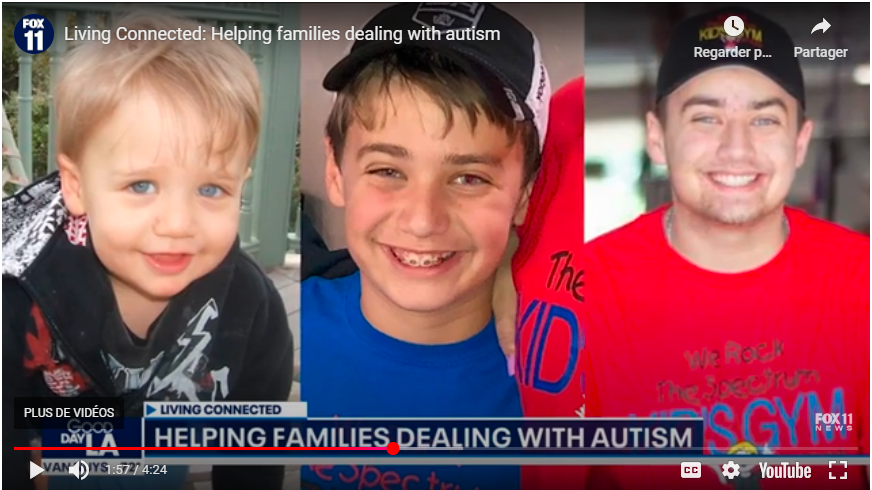Have you ever wondered how living with autism affects not just the individual but the entire family? This guide is here to provide you with strategies, tips, and resources to navigate the challenges of autism. From daily routines to safety practices, we cover it all to help you create a supportive environment.
Understanding the emotional and financial impact on families is crucial. Respite care and strong support networks can make a significant difference. Effective communication and planning are key to managing daily life and ensuring your loved one thrives.
In this guide, we will explore transitions, health, social support, and access to services. You will gain practical advice and actionable steps to help your family. Whether it’s understanding diagnosis, developing skills, or building relationships, we are here to support you every step of the way.
Table of Contents
Key Takeaways
- Autism impacts the entire family, requiring a coordinated approach.
- Effective communication and planning are essential for daily management.
- Community support and resources can significantly ease challenges.
- Understanding diagnosis and treatment options is vital.
- Building strong support networks is crucial for long-term well-being.
Understanding Autism in the Family Context
Autism shapes family dynamics in profound ways, touching every aspect of life. It brings unique challenges, from emotional stress to financial burdens. Families often face increased expenses for therapy, medical care, and specialized services. This financial strain, combined with the emotional toll of caregiving, can be overwhelming. Many caregivers report high levels of stress and may benefit from respite care to recharge.
Creating a supportive home environment is crucial. Small adjustments, like structured routines and sensory-friendly spaces, can make a big difference. These changes help reduce stress and create a sense of normalcy. Understanding these challenges is the first step toward effective support. By addressing both the emotional and practical aspects, families can build a nurturing environment that fosters growth and well-being.
Recognizing both the challenges and opportunities for improved communication is key. This foundation will help families navigate transitions and access services more effectively.
Navigating Transitions and Life Changes
Transitioning from one phase of life to another can be challenging for anyone, but for individuals with autism, these changes can be particularly daunting. Planning and preparation are essential to ensure a smooth transition, whether it’s from high school to adulthood or from pediatric to adult healthcare.
Transitioning from High School to Adulthood
One of the most significant life changes occurs when moving from high school to adulthood. According to the American Academy of Pediatrics, early planning is crucial, ideally starting around ages 14-16. This period involves exploring options such as college, vocational training, or entering the workforce. Vocational rehabilitation programs can provide valuable support during this transition. Emotional readiness is just as important as practical planning, so starting conversations about the future early and building a support network can make a significant difference.
Shifting from Pediatric to Adult Healthcare
Another critical transition is moving from pediatric to adult healthcare. This process requires careful planning to ensure continuous medical support. The American Academy of Pediatrics recommends private consultations for adolescents to address their specific needs. This transition is not just about medical care but also about preparing the individual to take more responsibility for their health. Research from organizations like the CDC and IACC emphasizes the importance of early planning to ensure a seamless transition.
| Aspect of Transition | Key Considerations | Recommended Actions |
|---|---|---|
| High School to Adulthood | Exploring career paths, developing life skills, and building a support network. | Start planning by age 14, engage in vocational programs, and seek community resources. |
| Pediatric to Adult Healthcare | Continuous medical care, self-advocacy, and understanding adult healthcare systems. | Schedule private consultations, involve healthcare providers early, and educate the individual about their health needs. |
Systematic guidance and support are vital during these transitions. By addressing both practical and emotional aspects, families can help individuals with autism navigate these life changes effectively.
Healthy Living and Safety Practices
Healthy living and safety practices are crucial for individuals with autism spectrum disorder (ASD). Regular physical and dental check-ups, proper nutrition, and consistent exercise routines can significantly improve overall well-being. Additionally, being aware of behavior changes that may signal underlying health issues is essential for early intervention.
Maintaining Physical Health with Routine Check-Ups
Routine medical care is vital for preventing and managing health issues. Regular check-ups help identify potential problems early, such as dental cavities or infections, which can be painful and lead to behavioral changes like head banging. Ensuring consistent healthcare can significantly enhance the quality of life for individuals with ASD.
Implementing Safety Measures and Injury Prevention
Safety practices should be tailored to the individual’s needs. Using identification bracelets can help protect those who may wander or have communication difficulties. Adapting the home environment to remove hazards and teaching safety skills are also important steps in injury prevention. Parents and caregivers should be proactive in creating a safe and secure living space.

By focusing on these practices, families can create a supportive environment that promotes health and safety, greatly improving the overall quality of life for individuals with ASD.
Living with autism: Daily Strategies and Routines
Creating a structured daily routine can significantly improve the quality of life for individuals with autism and their families. By implementing simple yet effective strategies, you can help reduce anxiety and create a more predictable environment.

Effective Communication Techniques for Everyday Life
Communication is a cornerstone of daily life. For individuals with autism, clear and consistent communication can make a world of difference. Using visual aids like schedules and checklists can help enhance understanding and reduce misunderstandings. Additionally, breaking down complex instructions into simple, manageable steps can improve comprehension and task completion.
- Use visual supports like picture communication symbols or digital apps.
- Practice active listening and provide time for processing information.
- Be consistent in your communication style to build trust and familiarity.
“Consistent communication is the bridge that connects understanding and action.”
Organizing Daily Tasks and Routines
Organizing daily tasks into manageable routines can provide stability and reduce stress. Start by identifying key activities and creating a schedule that works for everyone. Tools like planners, timers, and checklists can help keep things on track.
- Break tasks into smaller, easy-to-follow steps.
- Use sensory-friendly tools to make routines more enjoyable.
- Incorporate regular breaks to prevent overwhelm.
By implementing these strategies, you can help create a structured and supportive environment that fosters independence and skill development. Remember, small changes can lead to big improvements over time.
Enhancing Social Support and Community Connections
Building strong social connections is vital for individuals with autism and their families. Support groups offer a safe space to share experiences, challenges, and strategies, fostering a sense of community and reducing feelings of isolation.
Building Relationships Through Support Groups
Support groups provide a platform where individuals and families can connect with others facing similar challenges. These groups often host activities and workshops that focus on skill development, communication, and understanding symptoms of autism spectrum disorder (ASD). Engaging in these activities can enhance daily routines and overall quality of life.
| Benefit | Ways to Connect |
|---|---|
| Social Connections | Join local autism support groups or online forums for adults and families. |
| Skill Development | Participate in workshops focused on communication and daily routines. |
| Emotional Support | Engage in group activities that promote understanding and reduce symptoms of ASD. |
Connecting with others who share similar experiences can significantly reduce isolation and promote a sense of belonging. Encourage yourself to explore both in-person and online communities to find the support that best fits your needs.
Accessing Resources and Programs
Discovering the right resources and programs can make a significant difference in improving the quality of life for individuals with autism and their families. Whether you’re seeking therapy, vocational training, or specialized services, understanding where to look is the first step toward accessing the support you need.
Utilizing Government and Community Services
Government and community services play a vital role in providing support for individuals with autism. Programs like Benefits.gov offer a wide range of resources, from educational services to healthcare benefits. Additionally, organizations such as the Association of University Centers on Disabilities (AUCD) provide valuable information and assistance. These services are designed to help individuals with autism and their families navigate the complexities of daily life and access the support they need.
To access these resources, you can visit the official websites or contact local community centers. Many of these services also offer online directories that can help you find the most suitable programs for your needs. Staying informed about available resources is crucial, and leveraging online tools can make the process easier and more efficient.
Exploring Therapy, Vocational Rehabilitation, and Specialized Programs
Therapy options, vocational rehabilitation, and specialized programs are essential for individuals with autism, especially as they transition into adulthood. Vocational rehabilitation programs, such as those offered by state-specific agencies, can help individuals develop the skills they need to enter the workforce. Specialized programs, like those focused on life skills and independent living, can also provide tailored support to meet individual needs.
When seeking these resources, it’s important to explore both local and national options. Organizations like the Autism Society and the ARC (formerly the Association for Retarded Citizens) offer comprehensive directories and guidance to help you find the right programs. By taking a proactive approach to resource access, you can ensure that you’re making the most of the support available to you.
| Resource Type | Description | Access Information |
|---|---|---|
| Government Services | Benefits, educational services, healthcare programs | Visit Benefits.gov or contact local community centers |
| Vocational Rehabilitation | Workforce skill development, job placement assistance | Contact state-specific vocational rehabilitation agencies |
| Specialized Programs | Life skills, independent living support | Explore directories from organizations like the Autism Society and the ARC |
By actively seeking out and utilizing these resources, you can significantly enhance the quality of life for individuals with autism and their families. Remember, staying informed and proactive is key to accessing the support you need for long-term independence and well-being.
Discover our post: Can Autistic People Live alone ? Guide for Autistic Adults
Conclusion
Empowering families to navigate the journey of autism requires a blend of knowledge, support, and accessible resources. This guide has explored essential strategies for managing transitions, establishing daily routines, and maintaining health and safety practices.
Effective communication and structured routines play a vital role in enhancing daily life for individuals with autism. By implementing these strategies, families can create a supportive environment that fosters growth and well-being.
Building strong support networks and accessing available services are crucial for long-term success. Encourage yourself to put the strategies and tips discussed into action immediately. Early planning and continuous support can significantly improve outcomes for both children and adults with autism.
Remember, informed actions lead to better outcomes. Revisit the sections of this guide for additional guidance and empowerment. Together, we can create a brighter, more supportive future for all individuals with autism spectrum disorder (ASD).

